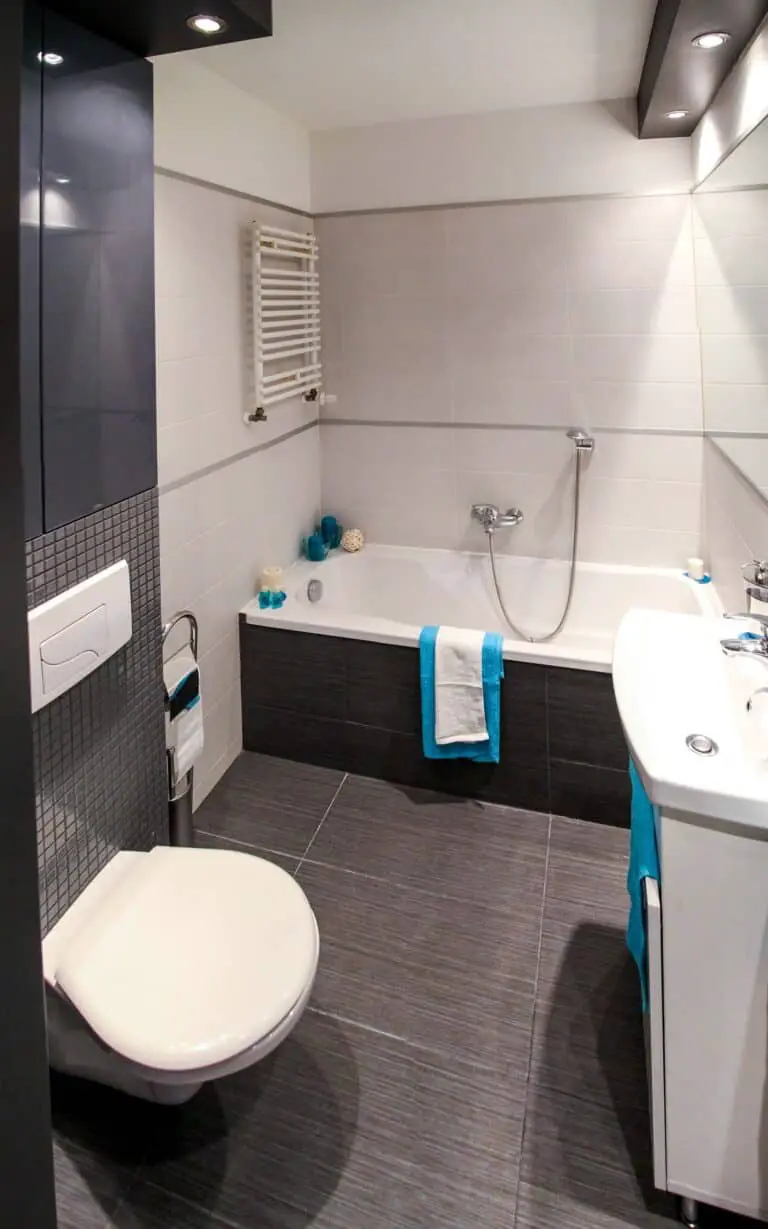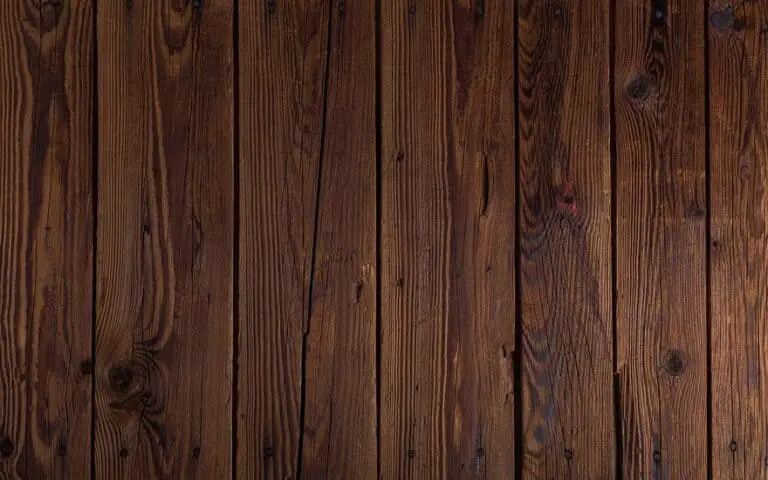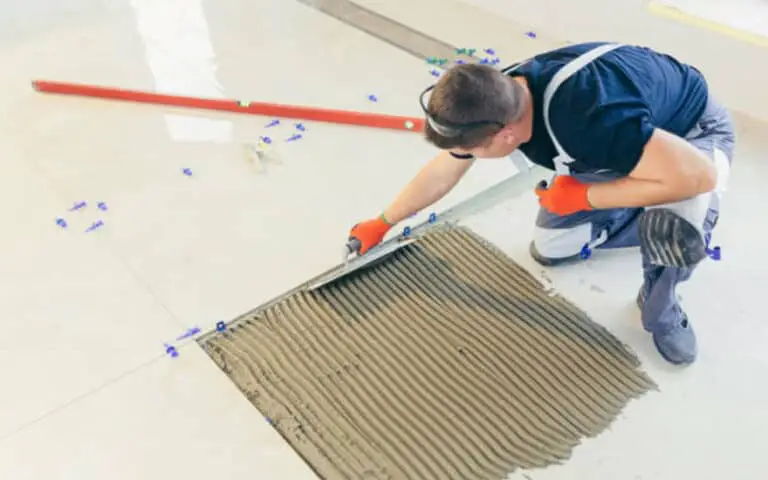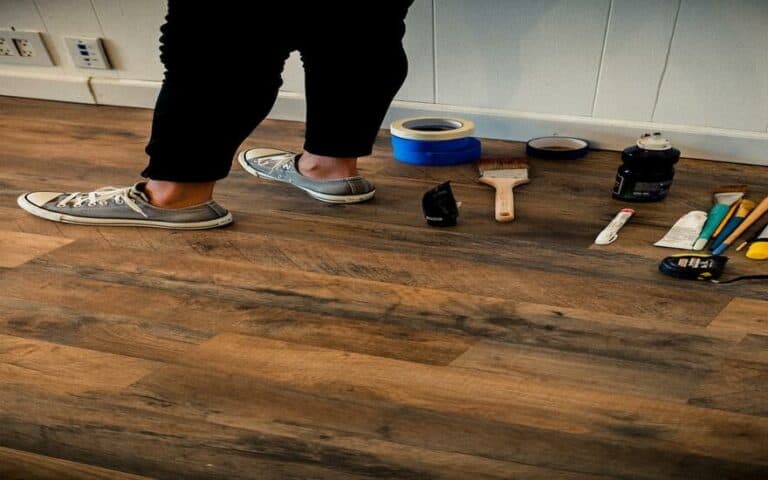This blog post will direct you on how to easily and quickly remove and replace your laminate flooring without taking up the skirting. Let’s get started!
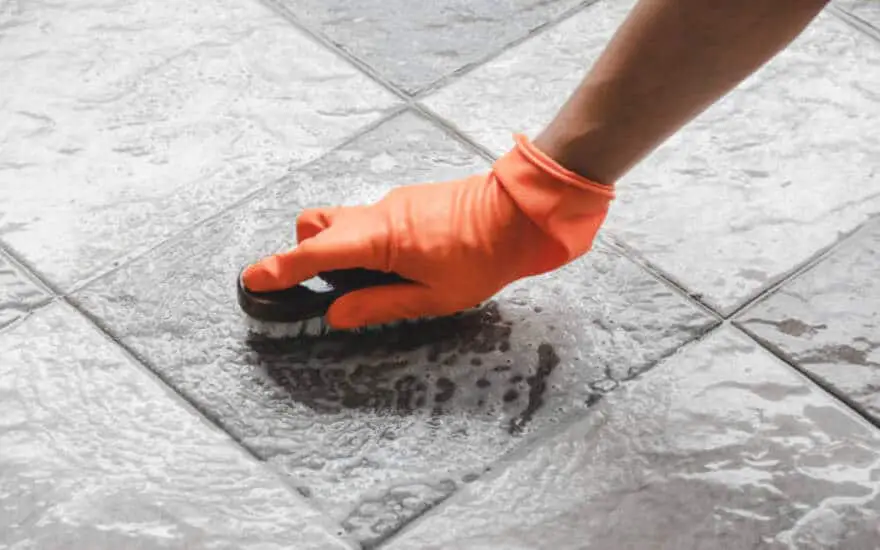
Step-by-Step Guide to Replacing Laminate Flooring Without Removing Skirting
This may include clearing the floor of furniture and fixtures and ensuring that all edges are straight and that the area is well-ventilated. You will also need to check for any existing gaps between the laminate floor and the skirting boards.
If there are any, you can use a gap filler to fill them in. Once all these preparations have been made, you can begin replacing your laminate flooring without removing skirting boards.
1. Tools You Need
Now that you better understand replacing laminate flooring without removing skirting, it is time to gather all the necessary tools for the Job. You will need a few basic tools like a jigsaw, a drill, a hammer, and a measuring tape.
You may also need other tools depending on the type of flooring you are installing. Make sure to check the manufacturer’s instructions for any specific tools needed for installation.
2. Preparing for the Job
Make sure to clear the area of any furniture, rugs, and other items that could be in the way. Next, prepare your skirting by checking for any loose nails or screws, and make sure that all surfaces are level and free from debris.
Once the area is clear, you can measure and cut the laminate flooring pieces to fit around the skirting.
3. Removing the Old Laminate Floor
Removing the old laminate flooring is necessary before the new flooring can be installed. Before starting, it is important to ensure that the existing floor is properly prepared. The old floor should be clean, dry, and free from dust or debris.
If necessary, use a putty knife to remove any stubborn laminate pieces. Once the old laminate has been removed, you can start preparing to install your new floor.
4. Installing the New Laminate Floor
Once you’ve finished preparing the floor and removed the old laminate, it’s time to install it. If you fit a floating floor, you must lay an underlay before starting. This helps to reduce sound and provides a more comfortable surface to walk on. Once the underlay is in place, you can start laying the new laminate boards.
Make sure to leave an expansion gap of around 10mm around the edge of the room. Use spacers or a spacer tool to ensure the gap is even. When you get to the skirting board, use a jigsaw to cut the boards at a 45-degree angle, so they fit neatly underneath. This installation method ensures that you can replace your laminate flooring without needing to remove your skirting boards.
5. Finishing Up
Once the new laminate floor has been laid, the final step is to finish up. This involves ensuring all the edges are sealed and secure using silicone sealant or a similar product. If you have chosen to use laminate beading, you should use a hammer and a block of wood to carefully tap it into place and ensure it is secure. Once this is done, your new laminate floor is ready to be enjoyed!
7 Advantages of Not Removing the Skirting
Regarding replacing laminate flooring, there are several advantages to not removing the skirting boards. Not only that, but it also helps keep the existing skirting boards in good condition, making it easier to reach areas of the floor.
Plus, there is a lower risk of damaging walls or furniture and a reduced risk of injury from having to take off the skirting boards. All these advantages make not removing the skirting boards a great option for anyone looking to replace their laminate flooring.
Advantage 1: Time-saving
Replacing your laminate flooring without removing the skirting boards is a great idea if you want to save time. By avoiding the removal of the skirting boards, you can get your flooring project done much more quickly.
This is especially beneficial if you are working on a tight deadline or don’t have the time to take on such a labor-intensive task. Not having to remove the skirting boards before installation also means you won’t have to put them back on afterward, saving you even more time.
Advantage 2: Minimize mess and disruption
One of the biggest advantages of not removing the skirting when replacing laminate flooring is that it helps minimize mess and disruption. This is because you don’t need to take out skirting to access the existing floor, which can be quite noisy and create a mess. By not removing the skirting, you can work around it, which will help reduce the amount of dust and debris that will end up in other parts of your home. With careful planning and preparation, you can ensure minimal disruption caused by replacing your laminate flooring.
Advantage 3: Avoid additional costs
One of the major advantages of not removing the skirting is avoiding additional costs. Not only will you save money on labor and materials, but you will also avoid the cost of purchasing new skirting boards if you damage the existing ones while removing them.
You may even use some of the materials used to install the original flooring to help with the new installation. This will save you both time and money.
Advantage 4: Keep the existing skirting in good condition
The fourth advantage is keeping the existing skirting in good condition. When you remove the skirting, there is a risk of damaging it or cracking it, which means you would need to buy new skirting to replace it. By not removing the skirting, you can keep your existing skirting looking great and avoid additional costs.
Advantage 5: Easier to reach areas of the floor
One of the key advantages of not removing the skirting when replacing laminate flooring is the improved access to areas of the floor. This is especially useful if you do repairs or maintenance work on the floor, as you no longer have to worry about reaching areas hidden underneath the skirting boards.
This can save you a lot of time and avoid any potential damage to the skirting. It also makes cleaning in these hard-to-reach areas easier, ensuring a more thorough job.
Advantage 6: Low risk of damaging walls or furniture
The sixth advantage of not removing skirting is the low risk of damaging walls or furniture. With a professional installation, your skirting boards will remain intact, and the floor will be laid with minimal disruption.
This means you won’t have to worry about knocking down any shelves or wardrobes, as the floor can be laid around them without taking them apart. As well as preventing damage to furniture, this also reduces the risk of damaging walls and other fixtures during the installation process.
Advantage 7: Reduced risk of injury
The seventh advantage of not removing skirting when replacing your laminate flooring is the reduced risk of injury. When you remove skirting, you are more likely to injure yourself due to the sharp edges of the skirting boards. On the other hand, when you do not remove the skirting, you can avoid this risk altogether.
This is especially beneficial for those not experienced in carpentry or installation, as they can take their time and avoid any potential accidents. In addition, by not removing the skirting, you can avoid any other potential risks, such as slipping or tripping over the boards.
Summary
In summary, replacing a laminate floor without removing the skirting is easy to achieve a professional-looking finish. It requires less time, money, and mess than taking out the skirting boards and fitting laminate beading.
This method has several advantages, such as avoiding additional costs, minimizing mess and disruption, and reducing the risk of injury. This is certainly a method worth considering if you’re looking to replace a laminate floor quickly and efficiently.


